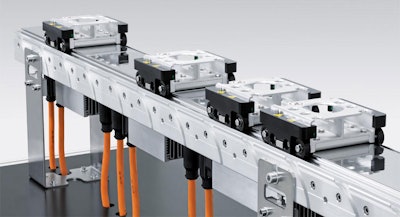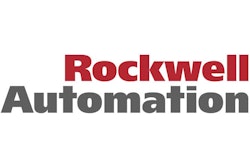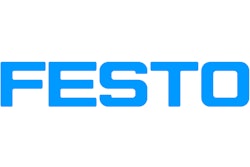Every so often, a technology comes along that stands to remake the packaging machinery landscape. Two decades ago, the industry moved from conventional variable speed drives to the use of servos. The then-new technology initially faced strong headwinds from the traditional mechanical crowd, and servos were almost deemed witchcraft in some circles. But the proof was in the pudding as servos introduced new dimensions for machines to be faster, smaller, and more amenable to quick size changovers. It suddenly became possible to replicate—with programmable servo—movements and functions that had been generated mechanically, with lots of labor and moving parts. A revolution in machine design came on the heels of servo’s inevitable eventual adoption.
Many OEMs see this type of paradigm-shifting potential today in the advent of independent movers on electromagnetic track systems, which we’ll call linear servo track systems for lack of a common descriptor.
“I think what we as machine builders see is an opportunity to introduce a new wave of design technology into our machines. That happens probably only about once every generation,” says Nick Bishop, VP, sales and marketing, Bradman Lake USA, Rock Hill, S.C. “Until now, machines have used conveyors that had different sizes of pitch distances for conveying products into cartons. These conveyors have had inherent restrictions in terms of flexibility and ability to handle different sizes and size changeover. Those are now going to change with adaptations of linear track systems like the Rockwell iTRAK system, which we’re using.”
The current track landscape
What several OEMs anecdotally trace to Jacobs Automation’s track system innovations in the 1990s is now proliferating in the packaging machinery space. When walking the halls at the recent PACK EXPO Las Vegas or interpack in Düsseldorf, Germany, the technology appeared to be everywhere.
The usual suspects are represented with linear track systems. Rockwell supports MagneMotion’s independent cart technology-based systems, as well as its iTRAK system, a descendent of earlier Jacobs technologies. B&R has entered the space via the SuperTrak system from Canadian company ATS Automation, and its new ACOPOStrak System. Beckhoff offers its eXtended Track System (XTS). And Festo and Siemens partnered to offer their Multi-Carrier System (MCS). Each of these systems has its own set of target markets and capabilities, but they all rely on a similar framework of multiple, independently controlled and magnetically propelled movers traveling on defined loop paths.
Growing consumer demand for combination/multi-/sampler packs seems to be one driving force behind the technology. A recurring theme has been OEMs’ use of linear track systems to address the complexity involved with collating multiple different products in different stacks and combinations. Ability to immediately switch from continuous to intermittent flow, for the purposes of filling or capping for instance, is another application area. These systems’ ability to replace robotics in collation are also very tempting to OEMs, as that can often translate to cost savings, complexity reduction, and footprint tightening.
Bradman Lake’s Bishop also suspects that he and other OEMs are only scratching the surface of the myriad potential applications for this type of technology. In fact, linear track suppliers often mention experiences in which machine builders’ light bulbs go off upon demoing the track systems with ideas for applications that the suppliers hadn’t even dreamt of. One controls supplier told of an OEM reaction as follows: “I know I can use this. I don’t know how I can use it yet, but I know I can use it.” Meanwhile, these early-adopter OEMs are off to a quick start in implementing the technology.
Bradman Lake’s take on track
When Bradman Lake first began dabbling with linear track systems years ago, Steve Rackham, control systems engineer, was looking for the ability to split a single stream of product into two possible directions, and vary the ratio from all toward one direction, all toward the other direction, and every possible ratio in between. To do that, he needed a machine that could independently control each product. After some testing with track systems, other potential applications began to dawn on him. One key use for Rackham was the ability to break the pitch on end-load machines.
“We’d have a fixed-pitch infeed matching up with fixed-pitch flights. To get away from that, and to make the machine more flexible and to give our customers the benefit of being able to run more products on the machine, that drove the need for independent cart technology on the machine,” Rackham says. “By that time, Rockwell had acquired iTRAK from Jacobs, and we needed a robust system, because we didn’t know what kind of products we were going to have to load.”
Traditionally, the company would have turned to a racetrack-type mechanism, which is a collator of pockets on belts.
“But that’s a fixed thing, so it involves some pulleys, a fixed belt length and some pockets, and a robot that bridged the gap between the collator and the cartoning machine,” Rackham says. “To eliminate that, we put in the iTRAK, which does the collating and the transfer into the cartoning machine. This gets rid of another machine entirely, so we’ve got one machine now instead of two, taking up a smaller footprint, and potentially much more flexible.”
Most recently, Bradman Lake debuted its Independent Motion Side Loader (IMSL) cartoner as its latest use of iTRAK technology. The small-footprint machine uses the iTRAK system to collate products into infeed buckets, which are then synchronized with a corresponding carton. The bucket is pushed all the way into the mouth of the carton, minimizing transfer issues. A linear inserter then positions, synchronizes, and loads the products into the cartons. (See video at: pwgoto/3188) Beyond saving on footprint, the IMSL hastens changeover time and effort.
“Before, an end user would have to adjust the pitch on the belts, then adjust the pockets on the race tracks, then change the robot tool. Now, the machine has fewer change parts. Before we had a robot that had different tools to do different jobs, and now we just have different pockets,” Rackham says. “An end user can have one machine that can do multiple collations, and multiple products can be run on one machine.”
Changeover time is roughly cut in half, according to the OEM. End users of the IMSL can produce more, and less time is spent on the non-productive time of getting a machine ready for the next production run. This naturally dovetails into current market trends.
“It’s a requirement of the industry that we’re in, the markets that we serve now,” Bishop adds. “In the past, most manufacturers migrated from high-volume and long production runs, to a situation where to grow their product ranges, they’ve had to add new products. These are lower volume, different sizes, and therefore the demands have become for much greater flexibility, quick size changeover. But then, that’s hampered if the need to change over regularly brings with it a disadvantage that it’s a lot more downtime. Linear servo track technology shines in this environment.”
A.M.P Rose balances tracks with robotics
An immediate benefit of linear servo track systems is the push-button size changing capability, allowing a pusher, carrier, or mover to snap to a different size format via servo without having to adjust connections to fixed chains or belts. But David Mann, managing director, A.M.P Rose, Gainsborough, U.K., sees beyond the obvious.
“That’s part of it, of course. But the way we look at it, its motion gives us the ability to continuously feed products into pockets where we’d otherwise be forced to use either intermittent motion or robots,” he says.
The company uses the Beckhoff XTS system in its smart factory-ready X-Pax machine line. The multi-function units are designed for flowpacking and collating bars into multipacks of various formats, and loading directly into shelf ready display cases. X-Pax is really a two-in-one flowpack and case packer.
To maintain continuous motion, most OEMs would use a robot to pick up the product, and travel with the infeed, with the transfer mechanism and the chain. The robot could then track, match the speed, and transfer.
“Now, with a linear track system like Beckhoff’s XTS, you can actually stop that transfer, push the product in, and then start the transfer up again. So, you can change intermittent motion into continuous motion. Because you have an intermittent part where you feed the product in, you have transfer accuracy. And then at the point of wrapping, processing,
or cartoning at the other end, you can change it back to continuous again. That is where you can increase your speed,” Mann says. “For us, our big advantage in a linear track system is changing intermittent into continuous, and that’s a lot of what we’re using it for. Particularly with flowpacking, which is our main focus—products in, and flow packed products out—and obviously high-speed. Plus, we have the ability to bypass robots where it makes sense.”
Which isn’t to say that A.M.P avoids robotics; it employs them frequently. Instead, the track system is a tool to occupy the space between intermittent motion and fully automated robotics. In some applications, robots may work better than linear track systems, but in 70 to 80 percent of the applications Mann sees, a linear track is the best option.
Another advantage of linear tracks over robotics is footprint. Some applications can create a multiplier effect of delta robots just to reach the speed.
“Consider an application that would take six Delta robots to be able to get the speed we’re looking for. But a linear track system, or even two tracks positioned with one over the top of the other, could accomplish the same thing. The XTS saves a massive amount of space compared to six Deltas,” Mann says.
Now, in situations with many different products coming in to the machine, with different streams that need managing from different sources and where it becomes difficult to have a more regimented feed, then robots’ flexibility seems to cope better, according to Mann. Linear track systems seem to be a better fit for high volume and continuous feed, when there is still a need for the flexibility to collate or use different formats or configurations.
“Configurations for multi-packs and variety packs is a specific area the XTS shines, as each different format is easy to accommodate,” Mann says. “We can do pretty much any configuration. And it’s very adjustable, very fast to change between the different formats. It’s better than robots for that. But, you can configure it basically, from the beginning, to be able to take a massive amount of different set ups. And it doesn’t have to be an even count multi-pack format, either. It doesn’t have to be a square eight, like four on four. It can be three on four, if you want, so that’s extra flexibility. And it will take product however you decide to feed it in. Once the in-feed is arranged, it’s up to the operator to decide what the pack format will be. Now, often, you need more than one linear track system to be able to do that. But it’s all possible, and very flexible.”
A recent custom machine project borrowing from the X-Pax line has Mann and A.M.P Rose flipping one XTS track upside down and running it inverted in tandem with another XTS track, one feeding into the other. This positioning accommodates on-edge biscuits.
“Sometimes, it’s better to be able to run upside down, in order to carry delicate products and products that don’t stand up very well,” he says. “Ultimately, this system could be used for standard biscuits, or any other type of on-edge project. And it wouldn’t have to use the inverted configuration.”
The machine runs at speeds up to 150 multi-packs/min, and each multi-pack may contain as many as 25 products.
Optima in early on track
Prior to the advent of linear servo track systems, the market only provided two options: cycled or continuous systems. Optima recognized the opportunity to combine both systems into one, and Rainer Feuchter, managing director, Optima consumer GmbH, actually co-developed what would become the Multi-Carrier System (MCS) with Festo and Siemens.
“We selected these companies because of their worldwide sales network. Optima saw a great marketing opportunity,” Feuchter says. “One advantage to this system is that you do not have to decide between one electronic or conventional system; a flexible combination of both systems is feasible in a single system, so the machines are highly flexible and variable.”
Currently, Optima uses this technology in its Moduline series of filling, closing, and cartoning machines designed for the cosmetics, water filter, and single serve industries, among others. Products transported on independently mobile carts can be more easily individually customized to consumer needs. Feuchter listed examples like dietary supplements, medications, infusions, perfumes, or cereals as products prone to heavy customization that could benefit from this capability.
“New, highly flexible machines are in the design stage right now,” Feuchter says. “This will lead to new, innovative approaches for the end-of-line equipment. These machines will revolutionize, ease, and reduce machine footprint.”
SACMO finds flexibility with MCS
SACMO, a Coesia company based in France, has historically been a specialty machine builder, integrator, and line builder focused on the cosmetics market. More recently, it has begun building standard modules of capping and filling machines targeting cosmetics markets.
“Now that we’ve got these standard modules, we understand that we have to make extremely flexible machines to keep up with our customers’ needs,” says Stefan Carlsson, CEO, SACMO. “Many operations in cosmetics can vary widely in time. This is especially true in filling, it can be extremely fast, or take quite a bit of time.”
Meanwhile, SKU proliferation only exacerbates the need for flexibility, as shorter runs of more products create bottlenecking changeovers in the line.
So instead of continuing to change out timing screws for each new package format or filling length, the company turned to the MCS. The result was its flexible filling, labeling and capping machine, on display at interpack 2017. It is able to do different functions, with different time scales, off of a constrained time increment. The servo electric conveyor system allows for a compact machine design and operator ability to adjust efficiency.
“We have a very good relationship with Festo and Siemens in France,” Carlsson says. “They understood that we didn’t need the entire conveyor to have the independent motion capability—only the filling portion of the line required this level of flexibility. So, in our case, for this machine, we didn’t need a full circuit of independent motion, we just needed a section of the track. With the MCS, we were able to integrate sections of smart conveyor, using programmable linear motion where we needed it, and use more traditional conveyors where we didn’t.”
Batch size of one goes linear servo track route
Debuting at drinktec 2017, Krones released what many consider to be Generation Four machinery with batch size shrinking, at least in theory, to one. The machine, which is only available in Europe at this time, aims at just-in-time filling of small beverage batches that can be individualized both in contents and in packaging.
With this machine, soft drinks and other mixed beverages can be produced directly in the filler. Water is supplied through the main pipe into the valve, while each of the individual flavor components is dosed to the correct amount and added through the secondary pipes. So, each beverage entering the filler could be individually mixed, filled, and labeled.
To accomplish this and give every container in the line its own set of rules, independent mover linear track technology was used. The company used B&R’s ACOPOStrak system to incrementally feed single bottles of varying formats to the filler. As a single-container handling system, ACOPOStrak can transport different container formats, each with its own optimized dynamics, avoiding damage and back-ups. The track system will then allow for the direct creation of mixed pallets.
“The ACOPOStrak allows us to make lot size one possible, because the electromagnetic track system allows us to bring every single bottle from module to module,” Andreas Gschrey, corporate research and development, Krones AG, says in a publically available video. “So, the bottle [carrier] itself is intelligent, and controls itself through the whole manufacturing line.”
The ACOPOStrak product is not available for sale into the U.S. until September 2018. See video of the Krones ACOPOStrak application at pwgo.to/3265.



































